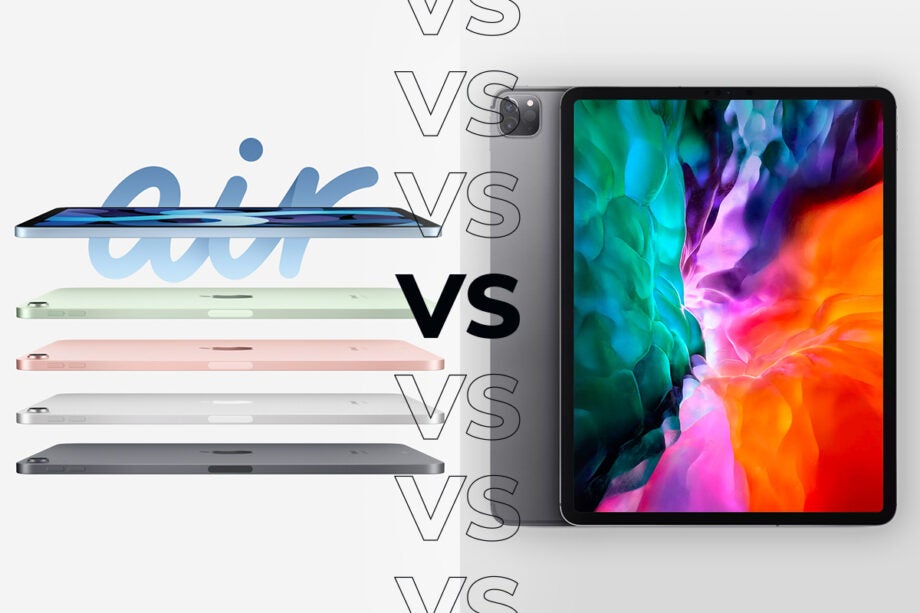Apple iPad Air 4 vs Apple iPad Pro 2020: the five key points you need to know

Apple has unveiled a huge upgrade in the form of the iPad Air 4, leaving many to wonder how this new tablet will stack up against the powerhouse that is the iPad Pro 2020. Let’s find out.
Until now, the iPad Air has stood firmly in the middle of the road as a more powerful option to the iPad 10.2” but an affordable alternative to the beefy iPad Pro. That could be set to change with the iPad Air 4.
Taking some serious cues from the iPad Pro 2020, the new iPad Air 4 packs an abundance of new features that are sure to leave its predecessor in the dust. With all that’s on offer in this new version of the iPad Air, an upgrade certainly seems warranted, but it’s key to also know if this new device is preferable to the iPad Pro 2020. Well, we’ve gone ahead and selected the key differences you need to know to help you in your buying decision.
Related: Everything you need to know about the iPad Air 4
1. The iPad Air 4 is getting a price hike, but it’s still cheaper than the iPad Pro 2020
The iPad Air 4 has a starting price of £579, which is a notable £100 increase on the previous generation iPad Air. While the bump in price feels justifiable due to the number of improvements that have been made, it still rings in at a significantly lower cost to the user than the iPad Pro’s £769 entry-level price.
Things get even more expensive if you opt for the iPad Pro’s 12.9-inch display, which rings in at an eye-watering £969. Still, if you keep your eye out, you can certainly bag a discount or two on the iPad Pro 2020, just don’t expect any major price cuts until the fifth generation iPad Pro makes an appearance.
2. The iPad Air 4 will feature a newer chipset than the iPad Pro 2020
The iPad Pro 2020’s powerhouse performance can largely be chalked up to the superb A13Z Bionic chipset, but its time as the fastest iPad in town might be coming to an end. In the iPad Air 4, Apple will be using the new A14 Bionic chipset which uses a five nanometre process to seemingly defy the laws of physics and pack a whopping 11.8 billion transitions in the proceedings. That hurts my brain on a whole new level.
3. The iPad Air 4 will adopt the iPad Pro 2020’s Liquid Retina screen
It’s the end of an era. Say goodbye Touch ID and say hello to smaller bezels and a gorgeous 10.9-inch Liquid Retina display. That’s right, the iPad Air 4 has taken its design cues straight from the iPad Pro 2020 playbook, featuring a near end-to-end screen that makes full use of the space available.
Related: A14 Bionic Chip Revealed
4. No secondary camera, but a shared main sensor
Taking its cue from the iPhone 11, the iPad Pro 2020 features not one, but two rear-facing sensors to give your tablet photography a serious bump in quality. While iPad Air 4 adopters won’t get quite the same dual-sensor experience, they will be able to benefit from the same 12MP main sensor that features on the iPad Pro 2020. That’ll lead to some fantastic shots on the go, and you’ll also be able to record footage in 4K 60fps.
5. The iPad Air 4 can also make use of Apple’s Magic Keyboard
Even if you’ve winced at the £299 asking price, you’ve no doubt had a pang of jealously for anyone sporting the iPad Magic Keyboard on the go. Stylish and functional, the Magic Keyboard was previously only available for iPad Pro 2020 users, but not anymore. The iPad Air 4 will be able to make full use of the Magic Keyboard, letting fans gain access to the accessory from a lower overall price point.
Related: iPad 8


